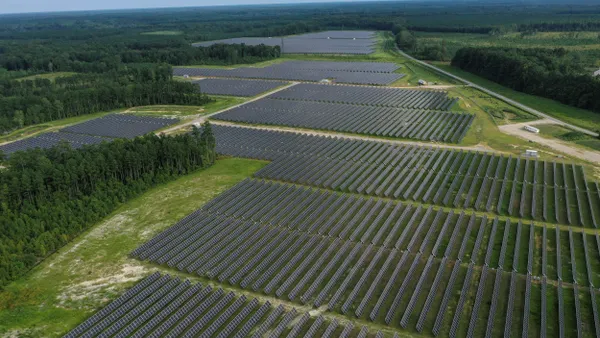This is the latest installment in Utility Dive’s “Taking Charge” series, where we engage with power sector leaders on the energy transition.
Philipp Stratmann, president and CEO of offshore services and intelligence company Ocean Power Technologies, thinks that autonomous ocean vehicles have reached an “inflection point” similar to the steep increase in adoption of aerial drones a decade ago. He believes these ocean vehicles can help the U.S. offshore wind industry address labor shortages as it grows.
“By using autonomous vehicles, you see a material reduction in the level of qualified mariners that you need,” Stratmann said. “You don’t need the same size vessel, so it becomes easier to get smaller vessels that are Jones Act compliant, and that helps you overcome some of the labor shortages.”
The Jones Act, a 1920 law regulating maritime commerce, is complicating the buildout of the U.S. offshore wind market. A February report by consulting firm McKinsey & Co. found that a lack of vessels equipped to haul turbines out to sea is endangering projects in development in the U.S., and Dominion Energy is currently constructing the nation’s first Jones Act-compliant wind turbine installation vessel.
A shortage of workers who are trained in both wind energy and maritime labor is also posing a significant threat to the industry. Stratmann said that shifting the work of surveying and monitoring offshore wind projects to autonomous vehicle operators means the industry can tap new labor sources, such as veterans.
“Over 15% of our workforce are U.S. veterans, and they're highly skilled in operating autonomous systems,” he said. “I think there is a definite way of bridging that [skills] gap by utilizing advanced technologies to try and overcome it.”
This potential for veterans to join the offshore wind workforce is bolstered by autonomous maritime systems sitting at the nexus of commercial and defense applications. Defense technology company Anduril Industries produces autonomous undersea vehicles used by the defense and offshore wind industries, and OPT’s Wave Adaptive Modular Vehicle is produced for commercial, scientific and defense-related purposes.
“I think we are at a material inflection point for how autonomous operations in the ocean are going to be adopted. Drawing comparisons, if you look at what happened ten years ago with aerial drones, I think uncrewed surface vehicles are now definitely at a similar stage of the evolution.”

Philipp Stratmann
CEO of Ocean Power Technologies
At sites selected for offshore wind projects, Stratmann said autonomous devices can be used to monitor patterns of ocean traffic, fishing, and whale migrations over years. He sees value in this kind of data collection when it comes to projects that are delayed, “because all sorts of things could have happened there in two years.” Stratmann said the company’s buoys have a track record of surviving severe weather, including hurricanes, which are expected to impact future wind farms in the Gulf of Mexico.
OPT was awarded three contracts from the National Oceanic and Atmospheric Administration in September, and will assist the agency with research into marine resources, ocean depth, and ocean meteorology. Ocean modeling data has been used by NOAA to site lease areas for offshore wind projects.
Stratmann said he’s excited about these contract awards in part because they indicate that the civilian side of the government is increasingly recognizing the potential value of autonomous operations.
“I think we are at a material inflection point for how autonomous operations in the ocean are going to be adopted,” he said. “Drawing comparisons, if you look at what happened ten years ago with aerial drones, I think uncrewed surface vehicles are now definitely at a similar stage of the evolution.”
In areas of the world with more developed offshore wind industries, such as Europe and Taiwan, wind developers are already utilizing “a lot” of autonomous technologies, Strattman said.
“If there is a true desire for offshore wind in the United States to try and catch up with some of these development activities, the approach towards advanced technologies and autonomous operations needs to adapt to the reality that exists in other parts of the world,” he said.















